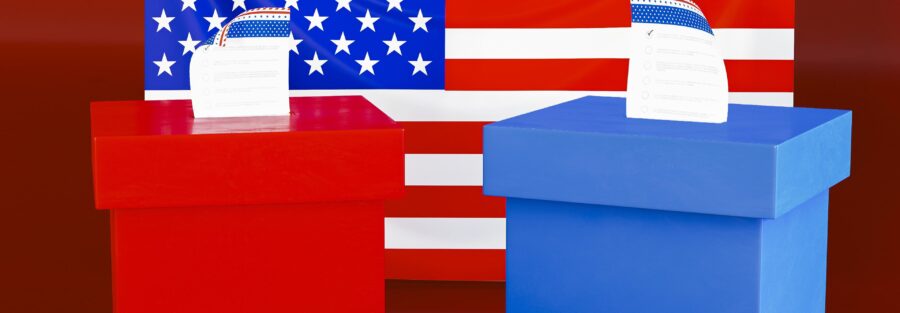Introduction
Donald Trump is a master of unpredictability, a leader whose political journey has often seemed like an endless series of surprises. His first term in office was marked by bold promises, fierce rhetoric, and a whirlwind of policies that defied conventional wisdom and left even his supporters wondering what would come next. From the tax cuts and tariffs to the trade wars with China and his tough stance on immigration, Trump turned Washington on its head and kept the world guessing at every turn. His time in office was a blend of shocking decisions and unexpected reversals, making it impossible to predict his next move. And now, in a stunning twist, Donald Trump has been elected for a second term as President of the United States, setting the stage for another round of economic and geopolitical upheaval. As the world braces itself for the impact of “Trumponomics 2.0,” the question remains: will his second term be a repeat of the first, or will it take an even more unpredictable turn?
What is Trumponomics?
Trumponomics refers to the distinctive economic policies and principles championed by Donald Trump during his presidency, and which continue to shape his approach to governance in his second term. Centered around the idea of putting “America First,” Trumponomics is built on several core pillars: protectionism, deregulation, tax cuts, and an aggressive stance on trade and immigration. At its core, Trumponomics seeks to reassert American economic dominance by reshaping the global trading system, reducing reliance on foreign goods, and encouraging domestic production. One of the most defining features of Trumponomics is protectionism, particularly in the form of tariffs. Trump’s administration levied significant tariffs on imports from countries like China, aiming to reduce the US trade deficit and encourage American companies to manufacture more domestically. By making foreign goods more expensive, Trump hoped to give US businesses a competitive edge in the global market. Another key aspect is corporate tax cuts. The Tax Cuts and Jobs Act of 2017 slashed the corporate tax rate from 35% to 21%, with the belief that this would incentivize companies to invest more in the US economy, create jobs, and boost wages. In parallel, the Trump administration has worked to roll back environmental and business regulations, which they argue stifle innovation and growth.
Deregulation is also a hallmark of Trumponomics, as Trump has sought to reduce the regulatory burden on businesses, particularly in industries like energy, healthcare, and finance. The idea is to foster a more business-friendly environment where companies can grow more quickly and innovate without being bogged down by excessive government oversight. Lastly, immigration control plays a significant role in Trump’s economic vision. His administration pushed for stricter immigration laws, including limitations on work visas like the H-1B, which directly impacted countries like India, a major supplier of skilled labour to US tech companies. Together, these policies have created a distinctive and often controversial economic model. Critics argue that Trumponomics favours the wealthy, exacerbates inequality, and destabilizes global trade, while proponents believe that it has strengthened the US economy by fostering job growth, reviving American manufacturing, and forcing other nations to play by more equitable trade rules. Now, with Trump’s return to the White House, the world is watching to see how Trumponomics will evolve—and how it will affect global economies like India’s.
Protectionism and Trade Tariffs
At the core of Trumponomics is a commitment to protectionism, particularly through the imposition of tariffs on foreign goods. Trump’s administration aimed to reduce the US trade deficit by making imports more expensive, thereby encouraging American companies to restore manufacturing and purchase domestically-produced goods. This strategy is most prominently seen in his trade war with China, where the US imposed tariffs on billions of dollars worth of Chinese products. Trump’s rationale is that such tariffs will force trading partners to adopt fairer trade practices, while also boosting American industries. By levying tariffs, Trump hoped to reduce reliance on cheap foreign labour and encourage companies to set up production facilities in the US This protectionist stance was not limited to China—Trump also imposed tariffs on steel and aluminium imports from other countries, including the European Union and Mexico. The goal was to protect US manufacturing jobs and ensure that American workers benefit from the nation’s trade policies.
Tax Cuts and Corporate Tax Reform
A central feature of Trumponomics was the Tax Cuts and Jobs Act of 2017, which slashed the corporate tax rate from 35% to 21%. The idea behind this significant tax reform was to stimulate economic growth by encouraging businesses to invest more in the US economy, create jobs, and increase wages. By making the US tax system more competitive, Trump hoped to attract more foreign investment and make American businesses more globally competitive. In addition to corporate tax cuts, the reform also lowered taxes for individuals, although critics argue that the wealthiest Americans benefited disproportionately. The tax cuts were designed to spur economic activity by putting more money in the hands of businesses and consumers. The hope was that businesses would reinvest their tax savings in new jobs and infrastructure, while consumers would benefit from lower taxes and potentially higher disposable income.
Deregulation
Trump’s administration placed a strong emphasis on deregulation, particularly in industries like energy, finance, and manufacturing. Trumponomics seeks to create a pro-business environment by reducing the regulatory burden that businesses often face. The logic behind this approach is that excessive regulations can stifle innovation, increase costs, and slow economic growth. By removing these regulations, Trump believed businesses would be free to innovate and invest in their operations without being hindered by government oversight. One of the most visible aspects of Trump’s deregulation agenda was the rollback of environmental protections. For example, the Trump administration dismantled several key elements of the Clean Power Plan and relaxed restrictions on fossil fuel industries. Similarly, financial regulations that were put in place after the 2008 financial crisis were also targeted for reduction. These efforts were intended to create a more favourable environment for businesses to thrive, although critics argue that deregulation could have negative long-term consequences for the environment and consumer protection.
America First
Another cornerstone of Trumponomics is the “America First” policy, which seeks to revitalize US manufacturing by reducing reliance on foreign goods and encouraging domestic production. Trump’s economic agenda has focused on reshoring jobs that were previously outsourced to countries with lower labour costs, particularly China. His administration sought to bring back manufacturing jobs to the US by offering incentives to companies to relocate factories and supply chains back to American soil. This policy has been a key element of Trump’s rhetoric, particularly in the Rust Belt states, where manufacturing jobs were lost due to globalization and outsourcing. By imposing tariffs and offering tax breaks for US manufacturing companies, Trump aimed to revitalize American industry and create jobs for blue-collar workers. The administration also pursued policies to encourage more US-based research and development (R&D) and incentivized the relocation of overseas production facilities back to the US through tax advantages.
Immigration Restrictions
Immigration plays a significant role in Trumponomics, particularly concerning skilled labour and low-wage workers. Throughout his presidency, Trump pushed for stricter immigration controls, arguing that reducing the flow of foreign workers would protect American jobs, particularly in industries like technology and low-wage labour. His administration made efforts to cut the number of H-1B work visas, which are crucial for skilled workers in fields such as IT, a sector that heavily relies on foreign labour, particularly from countries like India. Trump’s immigration policies extended beyond work visas. His administration also took a hardline stance on illegal immigration, pushing for a border wall between the US and Mexico and implementing a series of policies aimed at reducing both legal and illegal immigration. The rationale behind these policies was that American workers, particularly in low-skilled jobs, were being undercut by cheaper labour from abroad, which would be mitigated by tighter immigration controls.
Energy Independence
Energy independence was another major focus of Trumponomics, with an emphasis on increasing domestic energy production, particularly through fossil fuels. The Trump administration sought to reduce US reliance on foreign oil by ramping up domestic production of oil, natural gas, and coal. This was in line with Trump’s broader economic agenda of reducing foreign influence over critical sectors of the US economy. Trump rolled back several environmental regulations that had restricted the development of domestic energy resources, especially those related to the fossil fuel industry. This included easing restrictions on fracking and oil drilling on federal lands. The administration’s energy policies were designed to ensure that the US could produce more of its energy, thus reducing its dependence on imports and enhancing energy security. Critics, however, argued that these policies contributed to environmental degradation and undermined efforts to combat climate change.
America’s Global Trade Position
Under Trumponomics, one of the primary goals was to renegotiate existing trade deals and demand fairer terms from the US’s global partners. Trump’s approach to trade was rooted in the idea that past trade agreements, like NAFTA and the Trans-Pacific Partnership (TPP), were detrimental to American interests. His administration prioritized renegotiating these deals to ensure that they benefited US workers and industries. One of the most high-profile examples of this renegotiation was the USMCA (United States-Mexico-Canada Agreement), which replaced NAFTA. Trump argued that the USMCA would create more jobs and improve trade relations between the three countries, particularly in sectors like agriculture and manufacturing. He also took a tough stance against China, imposing tariffs to address perceived unfair trade practices and intellectual property theft, which he believed had hurt US businesses.
Debt and Fiscal Policy
While Trump’s tax cuts and aggressive spending were meant to stimulate economic growth, they also raised questions about the long-term fiscal health of the US economy. Trumponomics aimed to reduce the national debt, but the combination of tax cuts and increased military spending led to a sharp rise in the federal deficit. Despite this, Trump maintained that the benefits of his tax reforms would ultimately outweigh the costs by stimulating enough economic growth to offset the deficit. Critics argue that the tax cuts primarily benefited the wealthy and large corporations, while the national debt ballooned under Trump’s watch. While job creation and economic growth were emphasized, the long-term sustainability of such fiscal policies remained a point of contention.
Financial Markets and Currency Manipulation
Trumponomics also extended to global financial markets, with a particular focus on addressing currency manipulation by other countries. Trump frequently accused China and other nations of artificially devaluing their currencies to gain an unfair trade advantage. His administration took a more aggressive stance on foreign exchange rates, intending to ensure that the US dollar remained competitive on the global stage. In addition to addressing currency manipulation, Trump’s policies sought to push for a weaker US dollar, which would make American exports cheaper and more competitive globally. The idea was that a weaker dollar would help reduce the US trade deficit by making US products more attractive in international markets.
Conclusion
Trumponomics represents a bold, and often controversial, vision for the US economy. Its central pillars of protectionism, tax cuts, deregulation, and a focus on domestic manufacturing reflect a desire to reassert American economic dominance and reduce dependence on imports. While some aspects of Trumponomics have been praised for their ability to stimulate economic growth and create jobs, other aspects, particularly its protectionist measures and fiscal policies, have sparked significant debate. As Trump embarks on his second term, the world will continue to watch how his economic policies evolve and how they impact not just the US, but also global trade and economies like India’s.
References
- The Economist – The return of Trumponomics excites markets but frightens the world
- Indian Express – What Trumponomics means for India, the world
- Money Control – Fed vs Trumponomics 2.0: Post rate cut, how should investors position themselves?
- Economic Times – How Trumponomics works for India, and how it doesn’t?
- Image by Freepik




